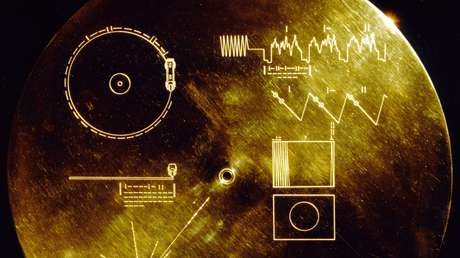Scientists want to send a probe that flies 2,000 times faster than Voyager 1 and 2 to the nearest star
Posted:
June 9, 2021 01:30 GMT
Researchers hope that the Breakthrough Starshot system will reach Alpha Centauri, the closest star system to Earth, in just 20 years.
A group of scientists from the Australian National University (ANU) have claimed to have found a way to send a spacecraft to another planetary system at a much faster speed than the Voyager 1 and 2 probes, launched in 1977, reported this Tuesday. local media.
After several decades of exploring our solar system, especially Uranus and Neptune, Passengers managed to penetrate the sun’s atmosphere and access to interstellar space.
How will they do that?
“We already have several ships, including the Voyager [en el espacio interestelar]But it will take many human lives before they get close to another star, explains astrophysicist Chatura Bandutunga of ANU, lead author of the study confirming progress.
As shown, the Breakthrough Starshot probe is expected to reach Alpha Centauri, the closest star system to the Sun, in just 20 years. To do this, he will have to travel 2000 times faster of the interstellar probes we have today.
Scientists estimate that to carry out this task, during which images and measurements will be recorded and transmitted to Earth, it will take about 100 million individual lasers To generate the required photovoltaic power of about 100 gigawatts.
As the astrophysicist explains, the mission’s technical challenge is figuring out “how we use light to drive a satellite” and “how we get that light from a beam on Earth.” “How to do this on a large scale is unheard of,” he stresses.
If your theory is correct, The lasers will be arranged with the correct combination and number To push the probe to where it should go. “The next step will be to test the building blocks in the lab,” Bandutunga says.
“This is not science fiction.”

Despite it being a small probe, scientists plan to send more than one unit, in the hope that some will reach Alpha Centauri without being destroyed in flight by wandering space dust.
Bandutunga, who rated the project as “Very ambitious”, asserts that what they want to achieve is to make the journey from our star to another possible within the time period of human life.
“Maybe this is possible with technology that’s not much more advanced than what we have now, so it’s not science fiction, it’s near-future technology,” said Jonty Horner, University of South Queensland professor of astrophysics.
Did you find it interesting? Leave your opinion in the comments!

“Evil coffee nerd. Analyst. Incurable bacon practitioner. Total twitter fan. Typical food aficionado.”

:quality(70):focal(288x128:298x138)/cloudfront-us-east-1.images.arcpublishing.com/metroworldnews/4VWFN4IMGFGQTCCSYSVPIJDM4A.jpg)









